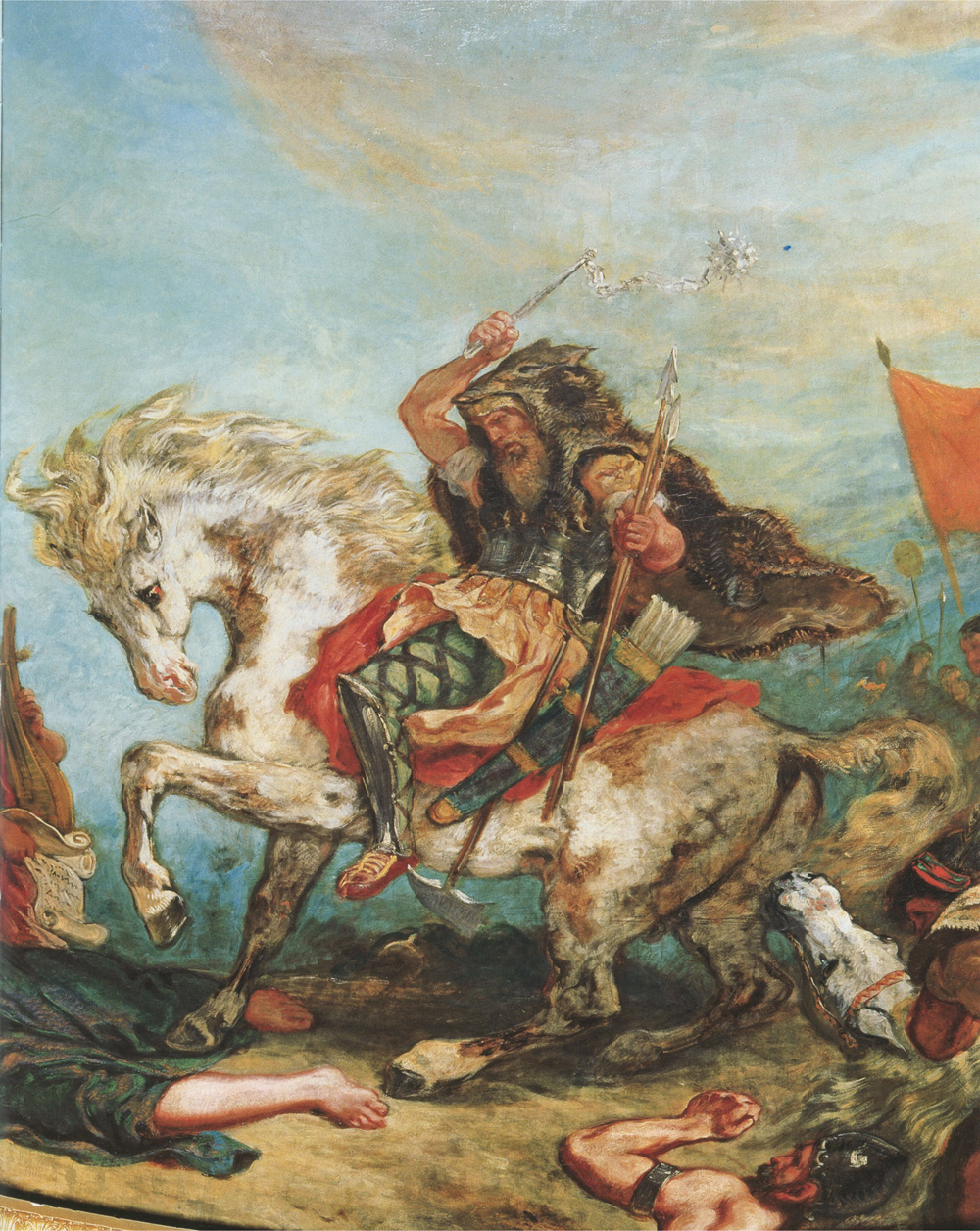|
Oebarsius
Oebarsius or Aybars (died after 448) was a Hun nobleman, brother of Mundzuk and uncle of Bleda and Attila. He was held in great honor, and sat next to Attila at royal banquets. Oebarsius was probably never a king, and had no dominion of his own. He was still alive in 448. His name has affinity with ''Oebasus'', the Latin form of an Iranian name. His name, possibly as many other recorded by Priscus, might have been Grecisized. References {{Huns Huns Attila the Hun 5th-century people ... [...More Info...] [...Related Items...] OR: [Wikipedia] [Google] [Baidu] |
Mundzuk
Mundzuk was a Hunnic chieftain, brother of the Hunnic rulers Octar and Rugila, and father of Bleda and Attila by an unknown consort. Jordanes in ''Getica'' recounts "''For this Attila was the son of Mundzucus, whose brothers were Octar and Ruas, who were supposed to have been kings before Attila, although not altogether of the same erritoriesas he''". Etymology The etymology of the name "Mundzuk" is disputed. It is recorded as ''Mundzucus'' by Jordanes, ''Mundiucus'' by Cassiodorus, ''Μουνδίουχος'' (Moundioukhos) by Priscus, and ''Μουνδίου'' (Moundiou) by Theophanes of Byzantium. A Germanic etymology was proposed by Karl Müllenhoff in the 19th century: Müllenhoff noted the similarity of the name's second element to that of the Burgundian king Gundioc and the Frankish king Merovech. According to Gerhard Doerfer, the name can be derived from a Gothic ''*Mundiweihs'', from ''mund-'' (protection) and ''weihs'' (battle). Gottfried Schramm rejects a Germanic origi ... [...More Info...] [...Related Items...] OR: [Wikipedia] [Google] [Baidu] |
Bleda
Bleda () was a Hunnic ruler, the brother of Attila the Hun. As nephews to Rugila, Attila and his elder brother Bleda succeeded him to the throne. Bleda's reign lasted for eleven years until his death. While it has been speculated by Jordanes that Attila murdered him on a hunting trip, it is unknown exactly how he died. One of the few things known about Bleda is that, after the great Hun campaign of 441, he acquired a Moorish dwarf named Zerco. Bleda was highly amused by Zerco and went so far as to make a suit of armor for the dwarf so that Zerco could accompany him on campaign. Etymology Greek sources have ''Βλήδας'' and ''Βλέδας'' (Bledas), Chronicon Paschale ''Βλίδας'' (Blidas), and Latin ''Bleda''. Otto Maenchen-Helfen considered the name to be of Germanic or Germanized origin, a short form of ''Bladardus'', ''Blatgildus'', ''Blatgisus''. Denis Sinor considered that the name begins with consonant cluster, and as such it cannot be of Altaic origin. ... [...More Info...] [...Related Items...] OR: [Wikipedia] [Google] [Baidu] |
Attila
Attila (, ; ), frequently called Attila the Hun, was the ruler of the Huns from 434 until his death in March 453. He was also the leader of a tribal empire consisting of Huns, Ostrogoths, Alans, and Bulgars, among others, in Central and Eastern Europe. During his reign, he was one of the most feared enemies of the Western and Eastern Roman Empires. He crossed the Danube twice and plundered the Balkans, but was unable to take Constantinople. His unsuccessful campaign in Persia was followed in 441 by an invasion of the Eastern Roman (Byzantine) Empire, the success of which emboldened Attila to invade the West. He also attempted to conquer Roman Gaul (modern France), crossing the Rhine in 451 and marching as far as Aurelianum (Orléans), before being stopped in the Battle of the Catalaunian Plains. He subsequently invaded Italy, devastating the northern provinces, but was unable to take Rome. He planned for further campaigns against the Romans, but died in 453. After Att ... [...More Info...] [...Related Items...] OR: [Wikipedia] [Google] [Baidu] |
Huns
The Huns were a nomadic people who lived in Central Asia, the Caucasus, and Eastern Europe between the 4th and 6th century AD. According to European tradition, they were first reported living east of the Volga River, in an area that was part of Scythia at the time; the Huns' arrival is associated with the migration westward of an Iranian people, the Alans. By 370 AD, the Huns had arrived on the Volga, and by 430, they had established a vast, if short-lived, dominion in Europe, conquering the Goths and many other Germanic peoples living outside of Roman borders and causing many others to flee into Roman territory. The Huns, especially under their King Attila, made frequent and devastating raids into the Eastern Roman Empire. In 451, they invaded the Western Roman province of Gaul, where they fought a combined army of Romans and Visigoths at the Battle of the Catalaunian Fields, and in 452, they invaded Italy. After the death of Attila in 453, the Huns ceased to be a major t ... [...More Info...] [...Related Items...] OR: [Wikipedia] [Google] [Baidu] |
Attila The Hun
Attila (, ; ), frequently called Attila the Hun, was the ruler of the Huns from 434 until his death in March 453. He was also the leader of a tribal empire consisting of Huns, Ostrogoths, Alans, and Bulgars, among others, in Central and Eastern Europe. During his reign, he was one of the most feared enemies of the Western and Eastern Roman Empires. He crossed the Danube twice and plundered the Balkans, but was unable to take Constantinople. His unsuccessful campaign in Persia was followed in 441 by an invasion of the Eastern Roman (Byzantine) Empire, the success of which emboldened Attila to invade the West. He also attempted to conquer Roman Gaul (modern France), crossing the Rhine in 451 and marching as far as Aurelianum (Orléans), before being stopped in the Battle of the Catalaunian Plains. He subsequently invaded Italy, devastating the northern provinces, but was unable to take Rome. He planned for further campaigns against the Romans, but died in 453. After At ... [...More Info...] [...Related Items...] OR: [Wikipedia] [Google] [Baidu] |



